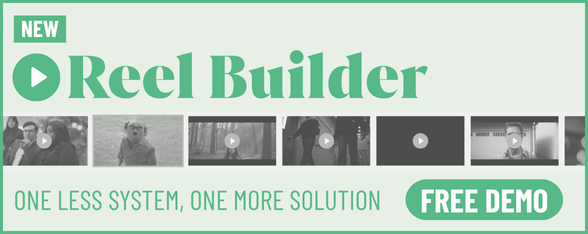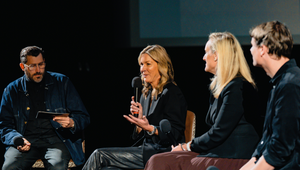
Magic Numbers: Data and Creativity Combine with Maurice Riley

With over two decades of experience in data analytics, Maurice Riley serves as the chief data officer for Publicis Groupe Australia and New Zealand. In his role, he partners with the Groupe’s agency CEOs and data leads to further elevate Publicis ANZ’s data specialisms and products.
He also works closely with Publicis Groupe ANZ’s chief creative officer, Dave Bowman, and chief media officer, Imogen Hewitt, to drive connected data, creative and media ideas through leveraging proprietary data and technology solutions.
Prior to this position, Riley was with Digitas for eight years, most recently as chief data officer of Australia and New Zealand. In this role, he masterminded data-fuelled creativity and technology solutions for a distinguished client roster across tourism, FMCG, finance, QSR and more. He was also previously VP strategy directory at Publicis New York (formerly Publicis Kaplan Thaler).
Launching his career at Nielsen in New York, Maurice played a pivotal role in creating the first U.S. household-level consumer segmentation and PRIZM-TV, a ground-breaking segmentation system that was the first to measure the correlation between media consumption and lifestyle choices.
Maurice served as president of the Creative Data Cannes Lions Jury in 2021 and is a frequent contributor to industry and news publications.
LBB> What question do you get all the time about data and creativity?
Maurice> I’m often asked, “What new data can you give me to make our creative and content better?”
Not only does this question makes me feel like a drive-up order window, but given most companies are awash with data, the real question should be, “What data should we stop using?”
Brands often rely on outdated or oversimplified data signals -- clicks that don't indicate intent, views that don't guarantee engagement, and demographic buckets that flatten people into stereotypes. More data doesn't equal more certainty; if you're measuring the wrong things or collecting unhelpful signals, you're likely optimising toward irrelevance.
The real shift is to move beyond static data or vanity measures to a dynamic view of human behaviour that predicts intent or nudges people towards purchase. How? Identity graphs can be oxygen for creative intelligence, especially in a world where almost no consumer is unreachable, and every behavioural signal is a portal.
In the automotive industry, for example, most brands demographically profile people giving intent signals on car marketplaces or via self-reported purchase data. While this feels actionable, it’s actually too late in the process to drive the levels of growth needed today.
Instead, by using identity graphs (like Lotame’s Panorama ID) we can understand what other parts of their ‘behavioral DNA’ makes someone want to enter the category -- not just convert. Alongside creatives, data teams can help create content that invites consideration, not just demands a decision.
Then, exciting possibilities emerge like:
• Scoring people on their likelihood to shortlist and buy a car before they even hit a search engine.
• Filtering out already decided buyers, shifting budget to high-value undecideds.
• Aligning media investment with real-time inventory, so ads aren’t wasted on markets where models are sold out.
This way, you’ll have uncovered the ‘missing middle’ -- the buyers who weren’t actively searching but are about to be.
LBB> How can you make sure that data is elevating creative rather than forming a wind tunnel effect and knocking all the interesting or unique edges off that make something distinctive?
Maurice> One of my favourite artists, Doechii, talks about how she blew up on TikTok with a raw, unexpected sound, only to spend the next year chasing the algorithm. Suddenly, everything she released felt too polished, too expected, too generic... That’s what bad data does to creativity.
Use data to find the tension and the drama, not just patterns.
Ask your resident drama queens, I mean data experts, things like, “How can we spot unexpected consumer contradictions?” “How can we measure what people say vs. what they do to drive behaviour change?” Or, “How might we decode a consumer action to influence others?”
Instead of smoothing out edges, data should sharpen them by finding insights that challenge assumptions. The best creative work comes from identifying friction -- where consumer behaviour clashes with expectations.
LBB> Can you share with us any examples of projects you’ve worked on where the data really helped boost the creative output in a really exciting way?
Maurice> Data shouldn’t just inform the creative. Sometimes, it should become the creative.
Take Lexus’ Experience Amazing Replays. For decades, tennis replays looked the same. But we thought, what if we could take Lexus’ sponsorship off the sidelines and onto centre court in a way that enhanced the game experience?
Using digital overlay technology and real-time data signals, the Publicis Groupe team in New Zealand turned live rallies into mesmerising kinetic digital art. Using a combination of AI, player and ball movement data, and advanced algorithms designed by digital artists, Lexus Amazing Replays completely reimagined what a replay could be. Feeding data-driven artworks back to the broadcaster, social platforms and in-stadium screens at pace. This was a unique, data-at-the-centre idea that allowed Lexus to not just sponsor the tournament but become part of how the game was experienced.
Credit: Saatchi & Saatchi New Zealand and Spark Foundry New Zealand
LBB> More brands are working to create their own first party data practice - how can a brand figure out whether that’s something that is relevant or important for their business?
Maurice> If the question, “Is first-party data important to my business?” is too hard to answer, or if you’re unsure what you’ll do with it, don’t bother. You’ve just failed the Australian Privacy Reform test of ‘fair and reasonable’ use.
Brands often scramble to collect first-party data, thinking it’s gold. But here’s the truth: People won’t share real data unless they get real value.
That’s why data clean rooms are increasingly becoming part of clients’ data strategies, because the technology helps fill the gaps in what brands think they know.
For example, a major retailer with millions of customer profiles still couldn’t predict when people would buy. When we used a data clean room to match to a partner’s privacy compliant behavioural data, we found the missing link. Different categories’ purchase intent was triggered by major life events (moving houses, having a baby, getting a new job), not only past shopping habits.
This shift to anticipating future behaviour led to a 28% jump in conversations with an average basket increase of $15.
The lesson? First-party data tells you who someone was. You also need to know who they’re becoming.
LBB> With so many different regulatory systems in different markets regarding data and privacy around the world - as well as different cultural views about privacy - what’s the key to creating a joined up data strategy at a global level that’s also adaptable to local nuances?
Maurice> Imagine a global data strategy as a streaming service platform, built on a single, robust framework of secure infrastructure, strong data governance, and universal privacy principles.
But just like streaming services tailor their libraries to each country’s licensing deals, your data strategy needs localised ‘content’ to meet each market’s regulatory and cultural nuances. This means establishing overarching global standards -- covering things like security controls and data retention -- while allowing flexibility in how those standards are implemented to align with regional rules.
By building your strategy in this way, you can keep operations efficient while respecting the privacy expectations and social contracts your brand has with each market.
LBB> In your view, what’s the biggest misconception people have around the use of data in marketing?
Maurice> Believing today's innovations are unprecedented, when we often revitalise old concepts with advanced technology.
Terms like ‘machine learning’ and ‘neural networks’ are really updates on early 2000s ideas like data mining and regression analysis. The main difference is our ability to process large data quickly.
Identity graphs modernise '90s household-level segmentation. While today, AI can enable precise individual targeting, overcoming cookie usage and fragmented identities.
Recommendation engines now use sophisticated AI for personalised suggestions, unlike the early 2000s' basic collaborative filtering. The core idea remains, but technology lets us analyse trillions of data points in real-time.
Because these modern innovations have predecessors, understanding how they were successfully applied in the past can shorten the time to achieving value. As such, be cautious if your data partner does not understand the origins of these methods. They may miss crucial insights into how to operationalise them correctly, or risk misinterpreting data. This could see them missing important insights that will build your business.
LBB> In terms of live issues in the field, what are the debates or developments that we should be paying attention to right now?
Maurice> Everything is being forced into a false binary between performance and brand building. Ehrenberg-Bass teaches us that broad reach and mental availability are key to long-term brand growth. Often, though, brand campaigns build memory structures but lack a clear next step. On the other hand, performance campaigns drive short-term sales but only capture people already in-market.
The real power is in the missing middle – the strategic bridge between the two. We must stop operating in extremes and find ways to connect both sides in how we orchestrate our campaigns or marketing calendars.
Look beyond your ‘best customers’ with behavioural modelling. Instead of just retargeting existing buyers or those in-market, assign value to mid-funnel interactions. Blend storytelling with utility to harness sequential storytelling, moving from broad brand messaging to personalised calls to action.
The brands that win next won’t be the ones refining their targeting. They’ll be the ones questioning who they’ve been ignoring and why, using data-driven insights to capture their curiosity.














